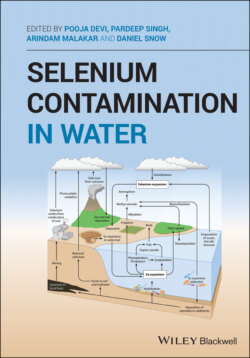Читать книгу Selenium Contamination in Water - Группа авторов - Страница 53
4.2.4 Feed Supplements
ОглавлениеAn enriched feed supplement is the second way to in which domestic animals can develop toxic levels, after Se‐enriched forage is consumed. Following different cases of Se toxicity in domestic animals in the US, the FDA has specified that selenosis causing all forms of Se should be within 0.3 mgSe/kgDM (FDA 1987).
Wahlstrom and Olson (1959) and Wilson et al. (1982) reported focal symmetric poliomyelomalacia following administration of a Se supplement in swine but chronic selenosis in cattle, goats, and horses was rare after a Se supplement in feeds. Knott et al. (1958) reported the severe hair loss caused by the administration of 13.3 g Se for 82 days in pigs. Dietary Se dose in horses between 17 and 24 mg/l induced hair loss, inappetence, emaciation, and hoof lesions (Miller and Williams 1940). Oral application of Na2SeO3 along with a diet of 0.25–0.5 mg Se/kg BW grain‐hay molasses induced animal mortality with many other characteristics such as depression, polioencephalomalacia, vomiting, gastrointestinal hazards, etc. (Maag et al. 1960). Many studies have shown that Se feed supplement within the seleniferous range has hindered growth rate, caused broken hooves, and decreased calving in cattle (Dinkel et al. 1963; Olson et al. 1973).
